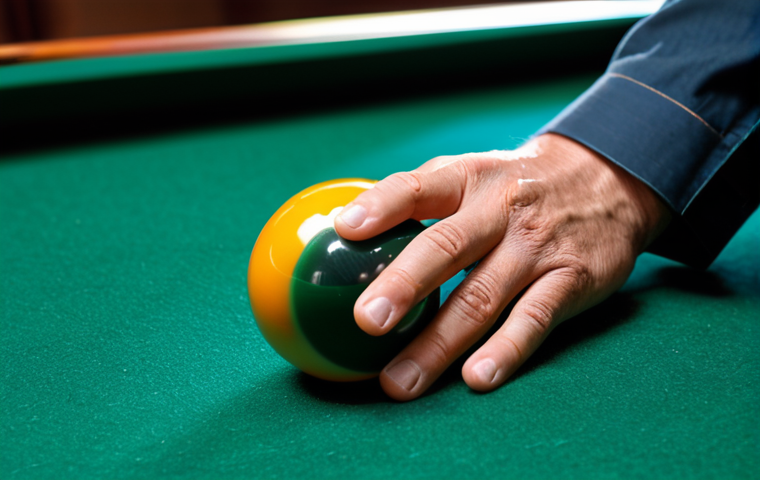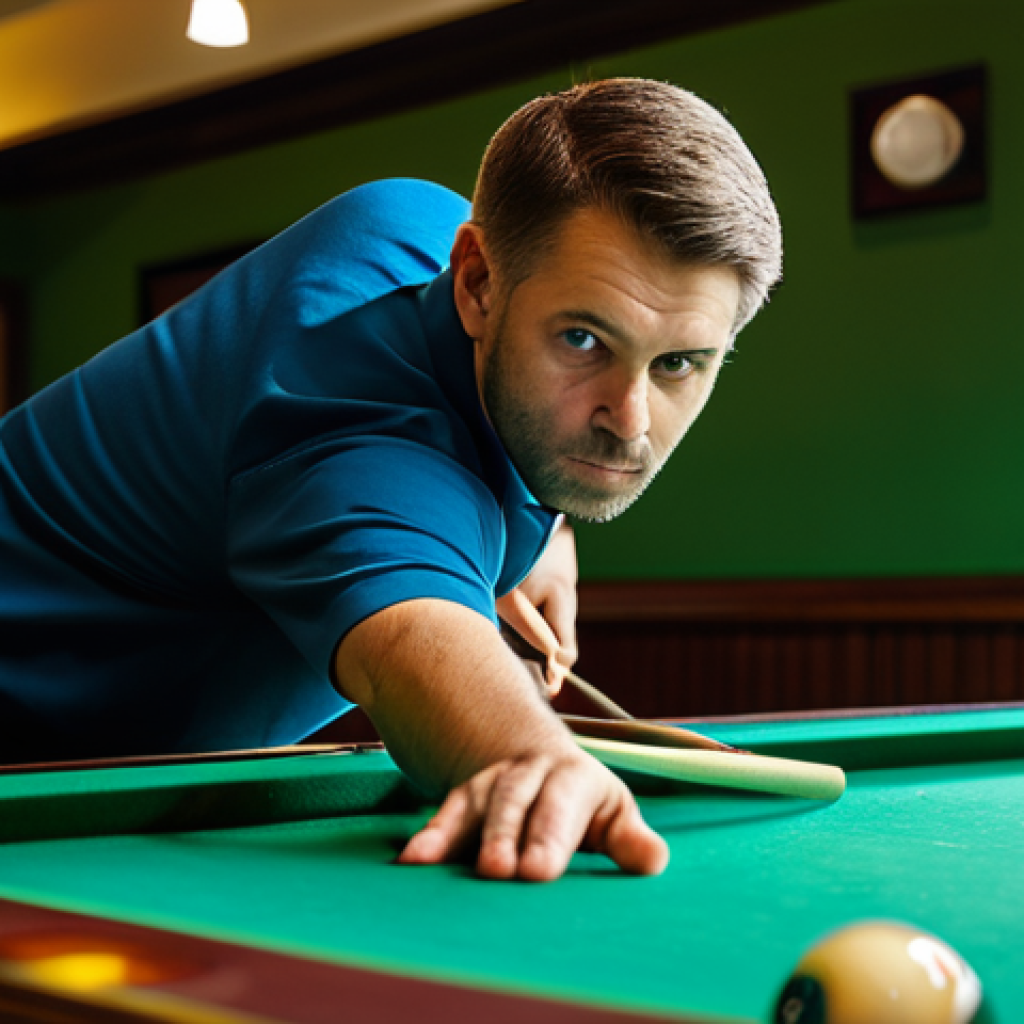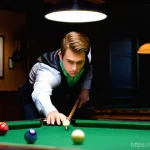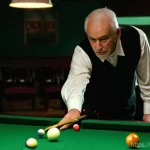Honestly, I’ve spent countless hours around billiard tables, and if there’s one thing that truly stands out beyond the visual spectacle, it’s the *sound*.
That crisp, satisfying *thwack* when two balls collide, or the deeper *clunk* when one drops into a pocket – it’s more than just noise; it’s an auditory fingerprint of the game itself.
You’d think a ball hitting another ball would sound pretty much the same, right? But from my own experience, having played on various tables with different ball sets, the subtle differences in impact sounds are genuinely astonishing.
It’s not just my ears playing tricks, either. The world of billiards is constantly evolving, with cutting-edge material science now playing a pivotal role in ball manufacturing.
Modern phenolic resins, for instance, are engineered for specific acoustic properties, aiming for that perfect resonance and feedback crucial for both amateur enjoyment and professional precision.
This often-overlooked detail is becoming increasingly important, influencing everything from player feel to how the game is broadcast, reflecting a growing trend towards optimizing every sensory aspect of the sport.
Understanding these nuances isn’t just about appreciation; it’s about unlocking a deeper insight into the physics and artistry of the sport, and even predicting future trends in equipment design.
Let’s get into the specifics.
The Unseen Architect: How Ball Materials Sculpt Every Collision

When you really start listening, deeply listening, to the game of billiards, you realize that the materials aren’t just about how the ball *looks* or *rolls*, but profoundly how it *sounds*.
I’ve spent years on different tables, from the worn-out felt in dimly lit pubs to the pristine surfaces of professional halls, and the most consistent variable in that satisfying “thwack” is undoubtedly the ball itself.
Early billiard balls were often made from ivory, which, as you can imagine, had a very distinct, almost brittle, sound profile. But thankfully, those days are long gone.
Modern balls, particularly those made from high-grade phenolic resins, are a marvel of engineering. Manufacturers like Aramith, a name I’ve come to trust implicitly, invest heavily in perfecting the density, elasticity, and surface hardness of their balls.
This isn’t just for durability; it’s meticulously designed to control the energy transfer upon impact, which directly dictates the acoustic signature of the game.
When I first started playing with a premium set, the difference was immediately palpable – not just in how the balls reacted, but in the clarity and resonance of each hit.
It felt like the game itself was speaking to me, giving richer feedback. The sound isn’t just a byproduct; it’s an intrinsic part of the playing experience, offering vital auditory cues about the power and precision of your shot.
1. Phenolic Resins: The Secret Sauce of Sound
It’s genuinely fascinating to delve into the world of phenolic resins. I used to think a ball was just a ball, but after chatting with some pros and even a material scientist friend, I learned just how much goes into it.
These resins are incredibly durable, resisting the marks and burns that can degrade other materials over time. But beyond their longevity, their consistent molecular structure ensures that when two balls collide, the energy transfer is incredibly efficient and predictable.
This efficiency is what creates that sharp, clean sound we all love. Inferior balls, often made from cheaper polyesters, tend to absorb more energy, resulting in a duller, less resonant *clack*.
It’s almost like the sound is muffled, lacking the vibrancy that tells you it was a solid hit. I’ve personally experienced the frustration of playing with such balls; it’s harder to judge the force of your shot when the auditory feedback is vague.
You crave that crisp, decisive sound that affirms your shot was well-executed.
2. The Role of Hardness and Elasticity in Auditory Feedback
Think about it: when you hit a ball, it deforms ever so slightly, then snaps back into shape. This brief deformation and restitution are what generate the sound waves.
A ball that’s too soft will absorb too much impact energy, resulting in a muted sound and often unpredictable rebound. One that’s too hard might sound sharp but could also be prone to chipping or cracking, and it might not give that satisfying *give* that you need for precise English.
The sweet spot, which manufacturers spend years perfecting, is a balance of hardness and elasticity that allows for a distinct, high-fidelity sound without compromising the ball’s integrity or playability.
It’s about creating a ball that “sings” when struck, providing clear, unmistakable acoustic signals that help you refine your game. Every player, whether they realize it or not, relies on these subtle auditory cues to understand their shot quality and make adjustments.
The Table’s Whisper: How Surface and Structure Contribute to the Symphony
You might be solely focused on the balls, but trust me, the table itself is a massive part of the acoustic experience. I’ve played on tables with worn-out felt that sounded like hitting a wet rag, and then on brand-new, perfectly leveled tables where every shot resonated beautifully.
The surface, the underlying slate, and even the rails play their own distinct roles in the overall sound profile of the game. It’s an intricate dance between the ball and its environment, where each element adds its own layer to the auditory tapestry.
A truly great billiard table isn’t just about smooth rolling; it’s about providing a clear, consistent acoustic backdrop that enhances the player’s connection to the game.
When everything aligns – the ball, the felt, the slate, the rails – the sound isn’t just good, it’s *immersive*. It draws you deeper into the flow of the game, making each shot feel more significant.
1. Felt and Slate: The Foundation of Resonance
The felt on the table, often made of a wool-nylon blend, isn’t just there to provide a smooth rolling surface. Its tension and thickness significantly influence the sound of the ball hitting the table or rolling across it.
A tightly stretched, high-quality felt will allow the ball’s inherent sound to project clearly, whereas loose or poor-quality felt can dampen the sound, making everything sound duller.
Beneath the felt lies the slate, the true backbone of the table. Slate is incredibly dense and stable, providing a solid, unyielding surface that allows the energy from the ball’s impact to resonate.
Cheaper tables might use particle board or other composite materials instead of slate, and the difference in sound is immediate and jarring. I remember playing on one such table once, and every shot sounded hollow, almost flimsy.
It lacked that satisfying solidity that tells you the table is absorbing and transferring energy correctly.
2. Rail Dynamics: The Bumper’s Echo
The rails and their integrated rubber cushions are another critical component. When a ball hits a rail, the sound isn’t just about the ball; it’s about how the cushion absorbs and then releases the ball’s energy.
High-quality K-66 or K-55 rubber cushions, properly installed and aged, provide a consistent, lively bounce, accompanied by a distinct *thump* or *click* that complements the ball-on-ball collision.
Cheaper, degraded cushions often result in a dead, unresponsive sound, indicating that the energy is being absorbed inefficiently, leading to erratic rebounds.
I’ve often found that a table’s rails are a good indicator of its overall quality; if the rail sound is dull, the whole table usually feels off. It’s a quick auditory check I do whenever I try a new table.
The Cue’s Signature: The Initial Strike and Its Acoustic Impact
It’s easy to focus on the ball-on-ball action, but let’s not forget the very first sound in a shot: the cue striking the cue ball. This initial impact sets the tone for the entire shot and has its own unique acoustic fingerprint.
From the material of the cue shaft to the type of tip, every element contributes to the sound you hear and, critically, the feedback you *feel*. I’ve tried countless cues over the years, from classic maple shafts to modern carbon fiber composites, and each one tells a different story with its sound.
The subtle nuances can actually inform your play, giving you a deeper understanding of how much power you’re imparting and the consistency of your stroke.
It’s a connection that you develop over time, almost instinctively knowing if a shot felt and sounded “right.”
1. Cue Shaft Materials and Their Resonance
The shaft of your cue, whether it’s traditional maple, layered wood, or cutting-edge carbon fiber, significantly influences the sound of the initial strike.
Maple shafts tend to produce a warm, woody *thwack*, providing a classic feel and sound that many traditionalists, myself included, adore. Carbon fiber shafts, on the other hand, often produce a sharper, crisper sound due to their stiffness and lower deflection, which some players find provides more precise feedback.
It’s a matter of personal preference, of course, but the auditory difference is undeniable. I remember switching to a carbon fiber shaft a few years ago, and initially, the sound felt almost too sharp, but I quickly grew to appreciate the immediate feedback it offered.
It was like hearing every ounce of energy transfer.
2. Cue Tip Composition: The Point of Impact
Perhaps even more crucial than the shaft is the cue tip. This small piece of leather, or sometimes synthetic material, is the ultimate point of contact.
Hard tips tend to produce a louder, more percussive sound, while softer tips might result in a slightly more muted, albeit often more controlled, impact sound.
The layers within a laminated tip also play a role, designed to maintain consistency and provide a uniform acoustic response over time. The sound of a well-struck shot with a perfectly conditioned tip is a thing of beauty – a clean, decisive *pop* that signals a precise hit.
I always make sure my tip is in prime condition; a worn or misshapen tip not only affects accuracy but also dulls the satisfying sound of a powerful break.
The Echo in the Pocket: Understanding the Sound of a Successful Shot
The ultimate goal in billiards, beyond just moving balls around, is to pocket them. And the sound of a ball dropping into a pocket is, for many, the most satisfying sound in the game.
But even here, there’s a surprising amount of variation depending on the design and materials of the pocket, the rails, and even the internal structure of the table itself.
It’s not just a binary “in or out” sound; it’s a dynamic acoustic event. That deep *thunk* or resonant *clunk* can tell you a lot about the table’s quality and the momentum of the ball as it succumbs to gravity.
I find myself listening for this specific sound more than any other; it’s the ultimate confirmation of a well-executed shot, a sweet reward for precision and strategy.
1. Pocket Material and Design: The Final Resonator
Billiard pockets are typically made with various materials, from leather to plastic or even rubber, all designed to muffle the sound and protect the balls as they drop.
However, the exact material and the presence or absence of a ball return system can significantly alter the sound. A solid, old-school leather pocket might produce a softer, more muffled *plunk*, while tables with modern, plastic-lined ball returns might generate a louder, more distinct *clunk* as the ball makes contact with the hard surfaces within.
I’ve noticed that tables with wider, more forgiving pockets often have a slightly different acoustic signature, almost like they’re welcoming the ball with a softer landing.
It’s a subtle but noticeable difference for an attentive ear.
2. The Ball Return For tables equipped with ball return systems, the sound doesn’t stop once the ball enters the pocket. The journey down the chute, often made of plastic or wood, adds another layer to the auditory experience. You get the initial *clunk* of the ball entering the pocket, followed by a series of *rumbles* and *taps* as it makes its way to the collection area. On a quiet night, in a peaceful pool hall, this often-overlooked sequence of sounds can be surprisingly meditative. I find myself anticipating the rhythmic cascade of balls returning to the rack, especially after a particularly satisfying run-out. It’s a small detail, but it contributes significantly to the overall sensory richness of the game, providing a consistent acoustic rhythm that underscores the entire playing session.
Aural Aesthetics: The Psychology of Sound in Performance and Enjoyment
Beyond the technical aspects of how sounds are produced, there’s a powerful psychological dimension to the auditory experience of billiards. The sounds aren’t just objective data points; they evoke emotions, build rhythm, and provide crucial feedback that goes straight to your subconscious. I’ve found that a table with a great acoustic profile can actually make me feel more confident, more engaged, and ultimately, a better player. Conversely, a table that sounds “off” can be incredibly distracting, breaking my concentration and making me question my own shots. It’s a testament to how deeply intertwined our senses are when we engage in a sport.
1. Sound as Performance Feedback and Focus Aid
For serious players, the sound of each shot is invaluable feedback. Did the cue ball make the crisp *pop* I was aiming for? Did the object ball produce the clean *thwack* that indicates solid contact? These auditory cues, often processed subconsciously, inform immediate adjustments to stroke, power, and aim. When the sounds are consistent and clear, it fosters a sense of control and confidence. Moreover, the rhythmic sounds of the game – the breaking of the rack, the subsequent collisions, the gentle roll of balls, and finally, the drop into the pocket – can create a meditative, almost trance-like state that helps maintain focus during long matches. It’s like the game’s heartbeat, guiding your rhythm and keeping you anchored in the moment.
2. The Emotional Resonance of the Game’s Soundtrack
Think about the distinct pleasure derived from the perfect break: that explosive, cascading roar of balls scattering across the table, followed by the satisfying *clunks* of several balls finding their way into the pockets. This isn’t just about successful play; it’s an exhilarating auditory spectacle that amplifies the joy of the game. Or consider the quiet satisfaction of a precise, soft safety shot, where the gentle *kiss* of the balls is the only sound. Each distinct sound evokes a different emotion, contributing to the rich tapestry of the billiards experience. I’ve personally felt a surge of exhilaration from a thunderous break, and a quiet contentment from a perfectly executed, gentle carom. The sounds of billiards are truly its own unique, compelling soundtrack.
Innovations in Auditory Feedback: The Future of Billiards Sound
Just as materials science has evolved, so too can the way we think about and even manipulate the acoustics of billiards. While traditionalists might prefer the organic sounds of wood, slate, and phenolic resins, there’s always room for innovation. Could we see tables with enhanced acoustic properties, designed not just for playability but for an optimized auditory experience? Could smart cues provide immediate, nuanced sound feedback to players? It’s exciting to think about how technology might further enrich this already deeply sensory sport. I’m always open to new developments, especially if they promise to deepen the player’s connection to the game through sound.
1. Acoustic Engineering in Table Design
Imagine billiard tables designed with specific acoustic chambers or materials that enhance certain frequencies of sound, making the *thwack* of a solid hit even more pronounced, or the *clunk* of a pocketed ball even more resonant. We already see this in musical instruments and concert halls, so why not billiards? Such engineering could not only improve the player’s experience but also enhance the spectating experience, making televised matches even more engaging. It might seem futuristic, but considering the advancements in material science, it’s certainly within the realm of possibility. I often wonder if there will be “acoustic profiles” for tables in the future, much like sound systems today.
2. Smart Cues and Balls: Next-Gen Auditory Feedback
The integration of miniature sensors into cues or even balls could lead to fascinating developments. Imagine a cue that could provide subtle auditory cues (or even haptic feedback) to tell you if your strike was off-center or if you imparted too much or too little spin, based on its acoustic signature. Or balls that could communicate data about their impact with pinpoint acoustic accuracy. This isn’t about replacing the natural sounds but augmenting them, providing a layer of precision feedback that could revolutionize training and performance analysis. As an avid player always looking to improve, the idea of having such immediate and detailed auditory insight is incredibly appealing.
| Component | Primary Material | Typical Sound Contribution | Impact on Player Feedback |
|---|---|---|---|
| Billiard Ball | Phenolic Resin | Crisp “thwack,” resonant “clack” | Clarity of impact, power assessment |
| Table Felt | Wool/Nylon Blend | Subtle roll “whoosh,” dampening | Consistency of ball travel, overall tone |
| Table Slate | Natural Slate | Solid, foundational resonance | Stability of impact, depth of sound |
| Rail Cushions | K-66/K-55 Rubber | Lively “thump,” consistent “click” | Rebound predictability, shot precision |
| Cue Shaft | Maple, Carbon Fiber | Initial “pop,” “snap” | Stroke consistency, power delivery |
| Cue Tip | Layered Leather | Direct “strike,” focused “tap” | Point of contact accuracy, spin application |
| Pocket Liner | Leather, Plastic | Muffled “plunk,” distinct “clunk” | Confirmation of pocketed ball, table quality |
My Personal Odyssey: Chasing the Perfect Billiards Symphony
For me, billiards isn’t just a game; it’s an ongoing sensory journey, and the soundscape is a huge part of that. I remember one evening, playing on an old Brunswick Gold Crown table – the kind with solid wood rails and perfectly broken-in felt. Every shot, every roll, every pocketed ball resonated with a warmth and clarity that I’d rarely encountered. The balls sounded like they were singing as they collided, and the *thunk* of a ball dropping into the leather pocket was pure auditory bliss. That night, I truly understood that the “feel” of a game is profoundly intertwined with its “sound.” It wasn’t just about hitting the balls; it was about orchestrating a symphony.
1. The Elusive “Sweet Spot” of Sound
Just like finding the sweet spot on a golf club or a baseball bat, there’s an elusive “sweet spot” for the sound of a billiard shot. It’s when the ball, the cue, the table, and your technique all align to produce the most resonant, most satisfying sound possible. For me, it’s that crisp, almost explosive *crack* on a powerful break, followed by the rapid-fire *clacks* of scattering balls, culminating in the deep, confident *thump* of a ball dropping into the pocket. When I hear that, it’s not just a sign of a good shot; it’s a moment of pure, unadulterated joy. It’s the game giving back, affirming your skill and intuition in the most beautiful way.
2. From Hobbyist to Auditory Aficionado
I started playing billiards simply for fun, a way to unwind. But over the years, as I started paying closer attention to the subtle nuances – not just how I was hitting the ball, but what it sounded like – my appreciation for the game deepened immensely. It transformed from a casual pastime into a passion, and I found myself evaluating tables not just by their levelness or felt condition, but by their acoustic signature. I’ve become an auditory aficionado, always listening for that perfect resonance, that ideal blend of sounds that signifies a truly premium playing experience. It’s a journey I wholeheartedly recommend to any fellow billiard enthusiast; start listening closely, and you might just find a whole new dimension to the game you love.
Closing Thoughts
As we’ve journeyed through the rich tapestry of sounds that define billiards, I hope you’ve gained a new appreciation for this often-overlooked dimension of the game. It’s more than just striking balls; it’s about orchestrating a symphony, listening for the subtle cues, and feeling the profound connection between the materials, your technique, and the resulting auditory feedback. Next time you step up to the table, don’t just see the shots – truly listen to them. You might be surprised at how much the game reveals when you open your ears.
Useful Information
1. Auditory Assessment: When trying out a new table, pay close attention to the sound of ball-on-ball collisions and rail rebounds. Consistent, clear sounds often indicate a well-maintained table and quality equipment.
2. Cue Tip Impact: A well-maintained cue tip is crucial not only for spin and accuracy but also for consistent acoustic feedback. A worn or misshapen tip can significantly muffle the sound of your strike, hindering your ability to judge power and contact.
3. Ball Quality Matters: Investing in high-grade phenolic resin balls isn’t just about durability; their superior density and elasticity directly contribute to the crisp, resonant sounds that enhance your playing experience and provide accurate feedback.
4. Table Environment: The acoustics of the pool hall itself can influence your perception of the game’s sounds. A quieter, well-designed space allows the subtle auditory cues of billiards to truly shine, aiding concentration and enjoyment.
5. Listen and Learn: Actively listening to the different sounds produced by your shots can be a powerful learning tool. It helps you subconsciously refine your stroke, identify solid contact, and understand the intricate physics of the game more intuitively.
Key Takeaways
The sound of billiards is an integral, often subconscious, part of the playing experience, offering vital feedback on shot quality, power, and precision. Every component – from the ball’s material and the table’s felt and slate to the cue’s shaft and tip – contributes to the game’s unique auditory signature. This acoustic tapestry not only enhances player performance by providing real-time cues but also deeply enriches the emotional and psychological enjoyment of the game, transforming it into a truly sensory art form.
Frequently Asked Questions (FAQ) 📖
Q: Why is the sound of billiard balls such a big deal? I mean, beyond just the satisfying ‘thwack,’ how does it actually impact the game or a player’s experience?
A: Oh man, you’ve hit on something truly fascinating! For me, playing for years, that sound isn’t just background noise; it’s practically a sixth sense at the table.
When you hear that crisp, clean crack on a well-struck shot, or the deep thunk of a ball dropping perfectly into the pocket, it’s immediate, tangible feedback.
It tells you, in real-time, how solid your hit was, if you applied the right amount of force, or if the cue ball made proper contact. I’ve been in games where a subtle change in sound instantly clued me into a problem with the table felt or even a slightly off-balance cue.
It’s like the ball is talking to you, affirming your shot or subtly hinting at what went wrong. That immediate auditory confirmation boosts your confidence when things go right and gives you vital clues for adjustment when they don’t.
It’s truly integral to the feel of the game.
Q: So, with all this talk about sound, how exactly does modern material science, like using phenolic resins, specifically engineer billiard balls for these acoustic properties? What’s the secret?
A: Ah, this is where the real magic happens, behind the scenes! It’s not just about making a ball round and hard anymore; it’s about crafting its very essence.
When manufacturers use advanced phenolic resins, they’re not just mixing plastic; they’re carefully engineering the material’s density, elasticity, and vibrational dampening characteristics.
Think of it like designing a musical instrument. They’re trying to achieve a specific resonance – that perfect ‘ring’ or ‘thwack’ – that feels right, that sounds right.
It’s a delicate balance. If a ball is too dense or too light, the sound becomes dull or tinny. These resins allow for incredibly precise control over how energy is transferred upon impact and how quickly the ball stops vibrating.
From what I understand, they’re constantly tweaking the molecular structure to get that ideal sound signature, ensuring it’s consistent across sets. It’s a huge leap from the old days, really emphasizing how much science is now part of our beloved game.
Q: You mentioned that these acoustic nuances are influencing everything from player feel to how the game is broadcast. Can you elaborate a bit on how these sound characteristics are impacting the wider world of billiards, beyond just the guy with the cue stick?
A: Absolutely! It’s a ripple effect that touches everything. For the players, as I said, it’s about feedback and confidence.
But think about the spectators, especially those watching professional tournaments on TV. That crisp, impactful sound makes the game so much more engaging and dramatic, doesn’t it?
When you hear that perfectly mic’d pop of a break or the definitive clunk as the 8-ball finds its home, it adds a visceral punch that visuals alone can’t replicate.
Broadcasters are actually investing more in specialized microphones and sound engineering to capture these precise tones because they know it elevates the viewing experience.
And for manufacturers, understanding these acoustic preferences means they’re constantly innovating. They’re not just making balls durable; they’re making them perform audibly, which creates new benchmarks for quality.
It’s even influencing table design, as designers consider how the table itself can optimize or complement the sound of the balls. It’s a full-circle optimization, all driven by that fundamental, often overlooked, auditory feedback.
📚 References
Wikipedia Encyclopedia
구글 검색 결과
구글 검색 결과
구글 검색 결과
구글 검색 결과
구글 검색 결과






